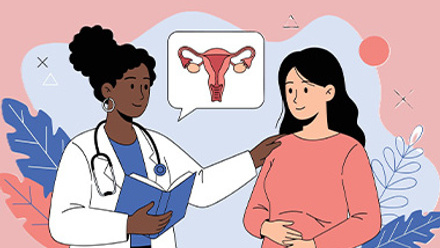Six ways employers can better support female employees at work
Workplace discrimination can present itself in many different forms. Unfortunately, women of colour, disabled women or LGBTQ+ women are more likely to experience discrimination.
Gender-based workplace discrimination can be obvious or subtly engrained into our daily lives, often without us noticing. For example, UK employees are using biased language four times a week, with 46% admitting they use this type of language at work.
Yet, 40% of employees have experienced gender-biased language in a meeting and 30% have experienced it in an interview setting, clearly showing there is a lot of work to be done to create an equal and positive working environment for all.
Mental health
Overall, women report lower life satisfaction scores than men. Women in full-time employment are almost twice as likely to have a mental health problem compared with full-time working men. This is due to a multitude of reasons, with many juggling childcare and additional caring responsibilities. In fact, women do four times more unpaid domestic working hours than men.
Meanwhile 42% of women experience burnout compared with 35% of men – indicating further support is required for maintaining mental health and wellbeing. For example, 65% of Spectrum.Life’s annual employee assistance programme calls were from women, demonstrating a high reliance on workplace wellbeing benefits, given the long waiting lists and difficulty accessing GP resources.
Pay gap
The cost of living crisis continues, and women are feeling the affect more than men. Financial problems lead to stress and anxiety and the risk of long-term mental illnesses. On average, 20.4% of women earn below the national living wage compared with 14% of men. As women are more likely to have caring responsibilities and take lead roles in household shopping, negative impacts are reinforced.
Greater concern for financial wellbeing and greater flexibility will help ease the pressure put on unpaid carers and help protect women in employment while trying to balance work and child responsibilities. For example, some employees might wish to work in the office to save money on household bills if they were to work from home.
Sexual harassment
Unfortunately, women still suffer workplace sexual harassment. Nearly three quarters (72%) of women have encountered/witnessed inappropriate behaviour by male colleagues at work.
Harassment is most likely to be experienced within the construction and technology industries, with 45% of women in construction saying it had affected their career. An overwhelming 96% of female employees say having a female manager would protect or improve their experience in work, a key consideration for employers/HR labour force structuring.
Health and menopause
There is a potential productivity loss of up to 14 million working days due to menopause with 25% of those women experiencing menopause considering leaving work. In fact, 63% of menopausal people say their working lifestyle has been negatively affected by their symptoms, with 31% forced to take time off as a result.
As there are currently almost one-third of working women/people in the core menopausal age (50-64) with the menopausal and older demographic (50+) only increasing, it is crucial for businesses and institutions to step up with policies and procedures to support older workforces.
Management has a key role to play in making workplaces inclusive and reducing stigma around menopause. Despite these issues faced by those enduring menopause, many workplaces either ignore the issue or provide little or no help. A Spectrum.life online poll on LinkedIn revealed 93% of respondents said their workplace offered no menopause support.
How can employers support female employees at work?
1. Female/menopause workplace assessments to cover facility and uniform implications on health.
2. Management training is a good way to maintain positive working environments, reduce stigma and ensure those in managerial positions have the ‘soft’ skills required for meaningful dialogue.
3. Workplace absence policies Multiple short-term absences can activate concerns at work. Women should not have to worry about performance reviews or disciplinary action as a result of health or child/caring responsibilities.
4. Flexible working hours will reduce workplace actions and follow-ups for multiple short-term absences, meaning less paperwork for managers.
5. Integrate offerings to include both mental and physical care, improving accessibility, reducing fragmentation and duplication of resources and better meeting employee’s needs.
6. Access to therapy/counselling makes treatment available at a time when many are struggling to access their local services. Specialist support and care is required to ensure employees feel understood and have confidence in the services available. Coaching and open-ended therapy options help support those that don’t need structured counselling and help to better meet the needs of a diverse workforce.
Supplied by REBA Associate Member, Spectrum Life
Supporting 4m+ lives in the corporate, education and insurance sectors with our health & wellbeing solutions.”








